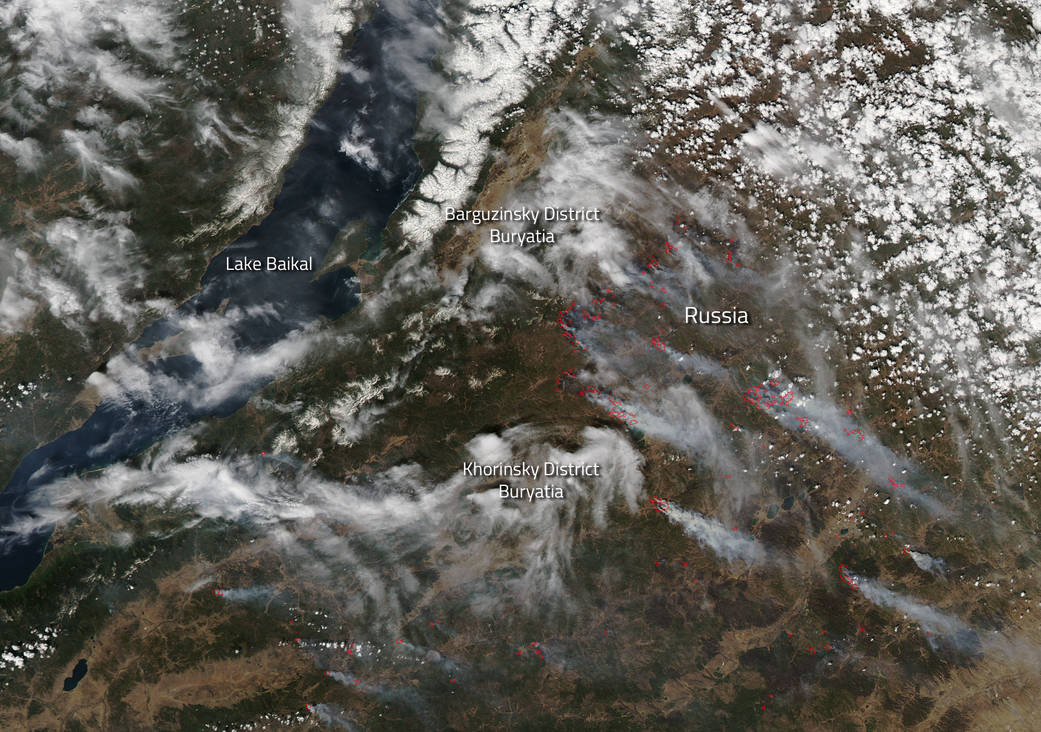News regarding the wildfires on the shores of Lake Baikal is spotty at best, but several sources have blamed the recent glut of outbreaks to the thawing of the permafrost in that region of the country. Permafrost, when frozen, lies dormant not providing any fuel for fires, but when thawed, permafrost is a perfect fuel of “peat-like organic matter” that burns like dry grass. Since the frozen tundra of Siberia is covered with permafrost it provides a near unending source of fodder for wildfires that break out in the area due to lightning strikes or careless human interactions. The fire season in this area typically begins in late July. This year it began a full 100 days before that in April. Since there is little to stop the fires in this region, they could conceivably march their way to the Sea of Okhotsk and beyond.
NASA’s Aqua satellite collected this natural-color image with the Moderate Resolution Imaging Spectroradiometer, MODIS, instrument on May 22, 2015. Actively burning areas, detected by MODIS’s thermal bands, are outlined in red. When accompanied by plumes of smoke, as in this image, such hot spots are diagnostic for fire.NASA image courtesy Jeff Schmaltz LANCE/EOSDIS MODIS Rapid Response Team, GSFC. Caption by Lynn Jenner





























